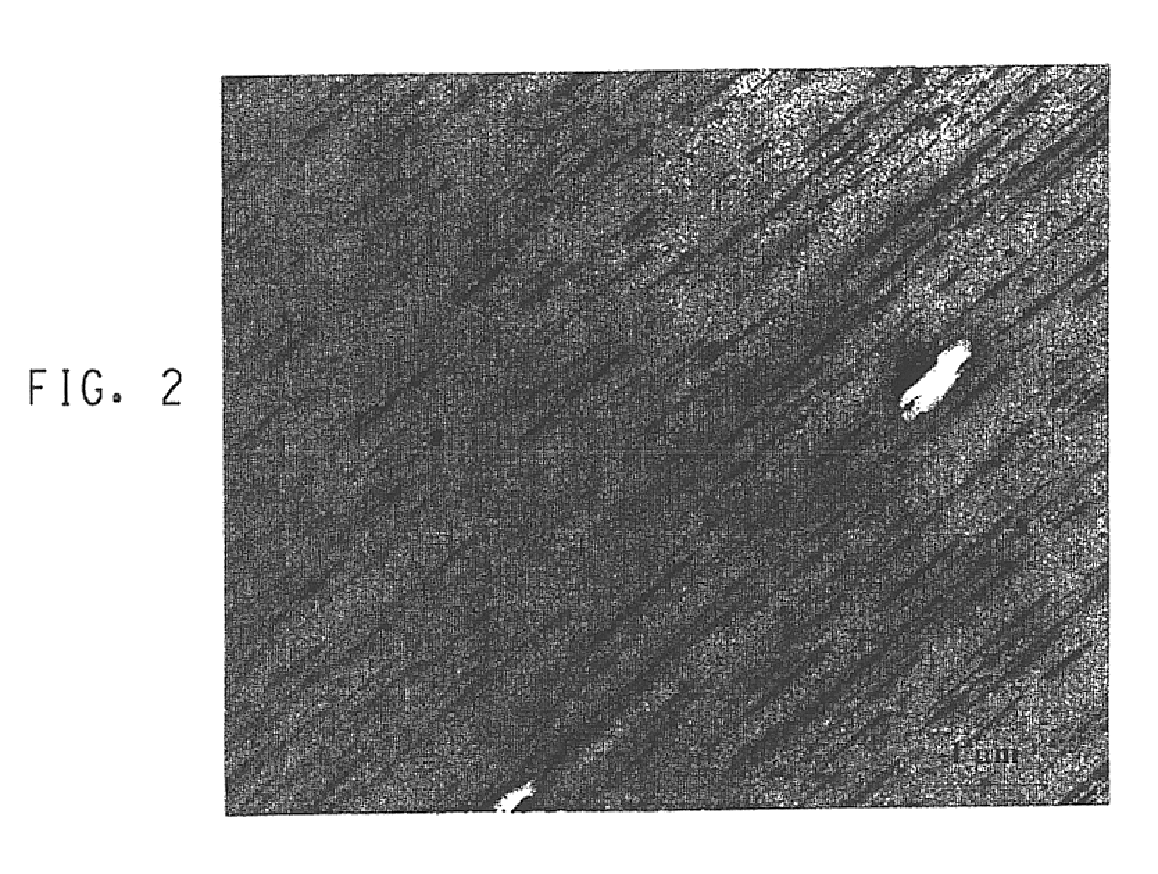Process of making poly (trimethylene dicarboxylate) fibers
a technology of trimethyl dicarboxylate and fiber, which is applied in the field of spinning poly (trimethylene dicarboxylate) fiber, can solve the problems of high speed, low work efficiency, and failure to make stable partially oriented poly(trimethylene terephthalate) yarns using a spinning speed in the same range. the effect of avoiding the need for lowering the draw ratio
- Summary
- Abstract
- Description
- Claims
- Application Information
AI Technical Summary
Benefits of technology
Problems solved by technology
Method used
Image
Examples
example 1
Partially Oriented Yarn Preparation
[0123]Partially oriented yarns were spun using conventional spinning techniques from poly(trimethylene terephthalate) blended according to Procedure A with polystyrene A described in Table 1 or by itself.
[0124]Poly(trimethylene terephthalate) or poly(trimethylene terephthalate) / styrene polymer blend prepared using Procedures A and C was extruded through a sand filter spin pack and a 34 round hole spinneret (0.012 inch (0.3 mm) diameter and 0.022 inch (0.56 mm) capillary depth holes) maintained at 273° C. The filamentary streams leaving the spinneret were quenched with air at 21° C., converged to a bundle and spin finish applied. Forwarding rolls with a subsurface speed described in the table below delivered the yarn bundle to an interlace jet and then onto a windup running at the speed described in the table below.
[0125]The spinning conditions and properties of the resultant partially oriented yarns are described in Table 2.
[0126]
TABLE 2Spinning Co...
example 2
Partially Oriented Yarn Preparation
[0129]Yarn was spun as described in Example 1 from the blends prepared according to procedure A (except the samples which were salt and pepper blends prepared according to Procedure B, as indicated by a footnote in the Table 3) to demonstrate that partially oriented yarns can be prepared with a variety of styrene polymers and under varied conditions.
[0130]
TABLE 3Spinning Conditions & Partially Oriented Yarn PropertiesPSSpinning GodetWindingYarnTenacitySample No.(wt %)PSSpeed, m / mSpeed, m / mDenierDPF(g / d)Eb, %A(control)——250025352116.22.1197.8B(control)——250025302126.22.25106.0C(control)——250025502116.22.35109.2D(control)——350035501524.53.1070.7 11.3A300030002086.12.00126.0 22A300030002086.11.72155.0 32A350035202036.02.08115.0 4*2A300030302106.21.80131.7 52B300029802106.22.17117.0 62C300030302046.02.19106.1 72C300029802156.32.14113.0 82D300029802046.02.30108.0 92E350035202086.12.5686.410*1F350035501474.32.7582.211*2F350035501444.22.09103.5*Salt and p...
example 3
Draw-Texturing
[0132]This example shows that yarns produced according to the invention are useful in subsequent draw-texturing operations.
[0133]The draw-texturing conditions use a friction false-twist texturing process using an apparatus described in FIG. 5 of U.S. Pat. No. 6,287,688, which is incorporated herein by reference. Partially oriented yarns prepared as described in Example 2 were heated to a temperature of about 180° C. as they passed through the heater and cooled to a temperature below the glass transition temperature of poly(trimethylene terephthalate) as they passed over the cooling plate. Take-up speed was 500 m / m.
[0134]The remaining draw-texturing process conditions and the properties of the resulting draw-textured poly(trimethylene terephthalate) yarn are set forth in Table 4 below. In this Table, the draw ratio is given as the ratio of the speed of the draw roll to the speed of the feed roll.
[0135]
TABLE 4TexturingTenac-SamplePSDrawYarnityLeesonaNo.PSwt %RatioDenierD...
PUM
| Property | Measurement | Unit |
|---|---|---|
| mean cross-sectional size | aaaaa | aaaaa |
| mean cross-sectional size | aaaaa | aaaaa |
| mean cross-sectional size | aaaaa | aaaaa |
Abstract
Description
Claims
Application Information
 Login to View More
Login to View More - R&D
- Intellectual Property
- Life Sciences
- Materials
- Tech Scout
- Unparalleled Data Quality
- Higher Quality Content
- 60% Fewer Hallucinations
Browse by: Latest US Patents, China's latest patents, Technical Efficacy Thesaurus, Application Domain, Technology Topic, Popular Technical Reports.
© 2025 PatSnap. All rights reserved.Legal|Privacy policy|Modern Slavery Act Transparency Statement|Sitemap|About US| Contact US: help@patsnap.com


